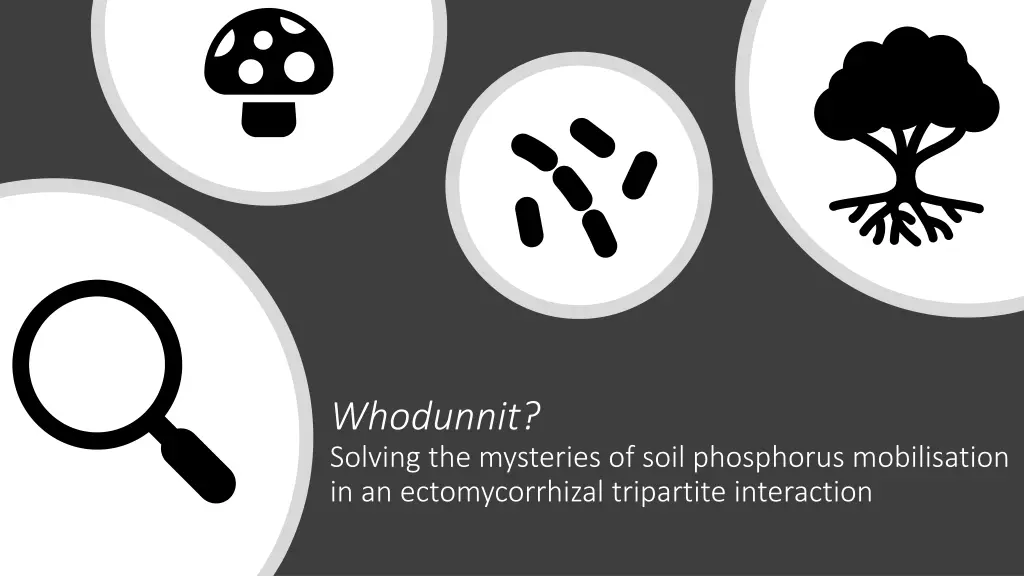
Unraveling Soil Phosphorus Mobilisation in Ectomycorrhizal Interaction
Delve into the intriguing world of soil phosphorus mobilisation in an ectomycorrhizal tripartite interaction involving forest trees, fungi, and bacteria. Explore the challenges faced by forest trees in accessing phosphorus locked in leaf litter and the crucial role played by ectomycorrhizal fungi and soil bacterial communities in facilitating phosphorus acquisition. Discover the experimental design and findings related to variations in Pisolithus species, complementary roles between fungi and bacteria, and environmental effects on fungal and bacterial functions. Gain valuable insights into the mysteries surrounding soil phosphorus dynamics in this fascinating study.
Download Presentation

Please find below an Image/Link to download the presentation.
The content on the website is provided AS IS for your information and personal use only. It may not be sold, licensed, or shared on other websites without obtaining consent from the author. If you encounter any issues during the download, it is possible that the publisher has removed the file from their server.
You are allowed to download the files provided on this website for personal or commercial use, subject to the condition that they are used lawfully. All files are the property of their respective owners.
The content on the website is provided AS IS for your information and personal use only. It may not be sold, licensed, or shared on other websites without obtaining consent from the author.
E N D
Presentation Transcript
Whodunnit? Solving the mysteries of soil phosphorus mobilisation in an ectomycorrhizal tripartite interaction
Forest trees are limited by phosphorus: Locked up in unavailable forms in leaf litter Available forms are quickly depleted P P P P P P P P P P
Forest trees are limited by phosphorus (P): Locked up in unavailable forms in leaf litter Available forms are quickly depleted ? ? To acquire P, forest trees are dependent on: Ectomycorrhizal fungi Soil bacterial community ?
Experimental design: Eucalyptus grandis Pisolithus albus Pisolithus microcarpus High nitrogen Low nitrogen Elevated CO2 Ambient CO2
1. Variation between Pisolithus species in P mobilisation ability 30 Soil available P (ug/g) 25 Plant only 5 x acid phosphatases 1 x glucose dehydrogenase 20 P. albus + plant P. albus + plant 15 P. microcarpus + plant + plant P. microcarpus 10 5 1 x acid phosphatase 0
2. Complementary roles between fungi and bacteria in P mobilisation P. albus and P. microcarpus Soil bacterial community Soil bacterial community P. albus Organic P mobilisation (acid phosphatase) Inorganic P mobilisation Organic P mobilisation (alkaline phosphatase) (Glucose dehydrogenase)
3. Environmental effects on fungal and bacterial roles High N negative effect on bacterial acid and alkaline phosphatases I in Pisolithus-inoculated soils positive effect on fungal acid phosphatase activity in P. albus-inoculated soils Elevated CO2 positive effect on bacterial alkaline phosphatase in Pisolithus-inoculated soils increased






















